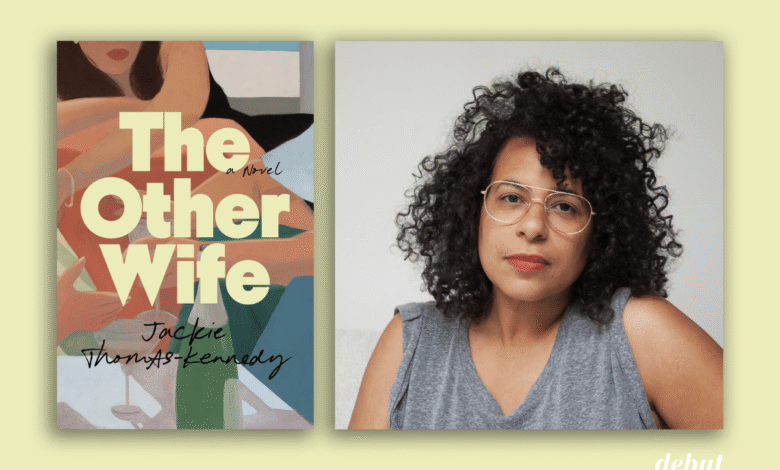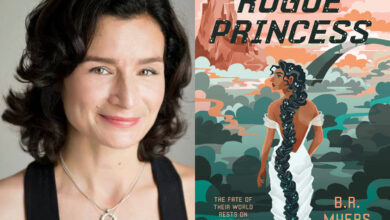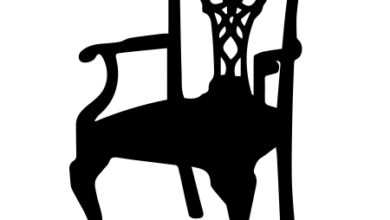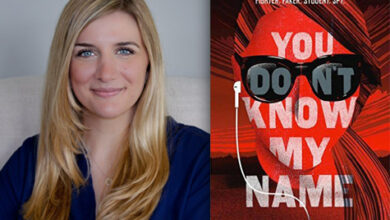The Other Wife author Jackie Thomas-Kennedy is inspired by Judy Blume, Toni Morrison, and John Cheever – debutiful

Jackie Thomas-Kennedy‘s writing has been selected for NPR’s Selected Shorts, and she was a 2014 Stegnar Fellow as well as the winner of the 2019 Stella Kupferberg Memorial Short Story Prize. Her debut novel, The Other Wife, follows Zuzu, a biracial woman in her late thirties, as she reflects on the choices that shaped her life, including her career and marriage to Agnes. A sudden loss sends her back to her hometown where she must confront her past and face the what could have beens face to face.
We asked Thomas-Kennedy to answer our recurring My Reading Life Q&A so readers could get to know the books that influenced her life and inspired her debut book.
What was the first book you were obsessed with as a child?
Blubber, by Judy Blume. I brought Blubber and Are You There God? It’s Me, Margaret on a ride to Cape Cod. I think I was about to start second grade. There was typical summer traffic – I imagine we left on a Friday afternoon – and while we waited to cross one of the bridges onto the Cape, I remember being somewhat happy about how long the trip was taking because I loved my books so much and I didn’t want to stop reading. I haven’t held a copy of Blubber in a long time, but specific (hopefully accurate?) moments stand out – boots painted gold (maybe silver) for a costume; a classmate dressing as a jockey for Halloween; some food, fallen to the floor, rinsed in the sink and returned to the pot; the phrase “waste not want not”; and, of course, the cruelty among the kids in the classroom toward Linda, and the narrator (Jill, I think) reacting with a variety of conflicting feelings.
What book helped you through puberty?
Having already read the Judy Blume canon. Also, at some point I was introduced to the Sharon Olds poem “I Go Back to May 1937,” one of many instances when I felt a piece of writing was so good I almost couldn’t stand it. It’s one of the first moments I understood time as the subject that would be most interesting to me. (This also applies to “Time Passes” in To the Lighthouse.)
What book do you think all teenagers should be assigned in school?
Technically, I am recommending a (very) short story and just the opening pages of a book here.
The short story is “The Outing” by Lydia Davis.
The opening pages are from The Bluest Eye by Toni Morrison. Reading it for the first time, I understood immediately that I was being asked to consider the familiar in a new light; that repetition can be enormously powerful on the page; that something frightening and intriguing can happen simply by removing the spaces between words.
If you were to teach a class on Damn Good Writing, what books would make the syllabus?
The class would be ongoing, year after year, and the syllabus would never be finished, but it would include Jo Ann Beard’s three books – Boys of My Youth, In Zanesville, and Festival Days. No one writes like Jo Ann Beard. Also on the syllabus: for brilliant scenes and clear physicality, Brandon Taylor’s The Late Americans; for use of concrete objects, The Catherine Wheel by Jean Stafford and The Age of Innocence by Edith Wharton; for everything on every page, Toni Morrison’s Song of Solomon. For humor and insight and dialogue and character, Elif Batuman’s The Idiot (as well as Either/Or.) For ferocious intelligence and unexpected turns, Elizabeth McCracken’s The Souvenir Museum. For dazzling structure, Lisa Halliday’s Asymmetry. For pure delight in the prose itself, among other things: John Updike’s Of the Farm. For breathtaking melancholy rendered in so many different ways, The Stories of John Cheever. I could go on.
What books helped guide you while writing your book?
A fellow writer suggested Matt Bell’s Refuse to Be Done. It’s really smart. I also love the Graywolf Press “Art of” series – I am particularly fond of Charles Baxter’s The Art of Subtext: Beyond Plot. Rereading books I love is always helpful to me; I did a lot of rereading, including some from the list above. I always keep The Journals of John Cheever nearby when I write. Also works by Claire Keegan. Her prose is so confident and clean.
What books are on your nightstand now?
The nightstand is metaphorical but the books are real and right here: Little World by Josephine Rowe; The Incendiaries by R.O. Kwon; Feel Free, essays by Zadie Smith; Are You Happy? by Lori Ostlund; Midnight Self by Adrian van Young; Mystery Lights by Lena Valencia; What did you do today? by Anthony Varallo; Sad Grownups by Amy Stuber; Fulfillment by Lee Cole. I also want to mention a book that was quite recently on my nightstand and that I can’t stop thinking about – Counting Backwards by Binnie Kirshenbaum.



